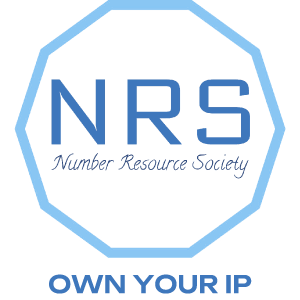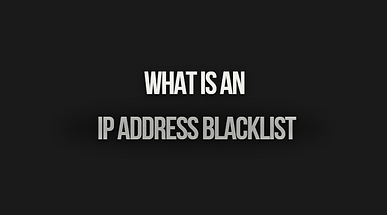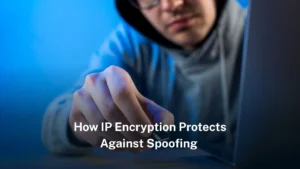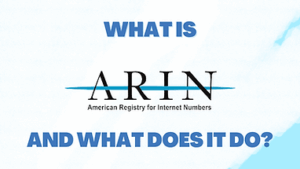An IP address blacklist is a database of IP addresses that have been flagged as sources of malicious or suspicious activities. Internet service providers (ISPs), email servers, and security organizations use these blacklists to block unwanted traffic, prevent spam, and enhance cybersecurity. If an IP address is blacklisted, it may be restricted from accessing certain websites, sending emails, or engaging in online activities.
Causes of IP Address Blacklisting
There are several reasons why an IP address may end up on a blacklist. Some of the most common causes include:
- Spamming: If an IP address is detected sending large volumes of unsolicited emails, it may be flagged and blacklisted. This is a common issue for email marketers who do not follow best practices.
- Malware or Virus Infections: If a device on a network is infected with malware or a virus, it may start sending malicious traffic without the owner’s knowledge. This can result in blacklisting.
- Suspicious Activity or Hacking Attempts: An IP address associated with brute-force attacks, unauthorized access attempts, or other hacking activities may be blacklisted by security databases.
- Shared IP Reputation: If you are using a shared hosting service or a dynamic IP address, someone else’s activities may cause the IP address to be blacklisted, affecting all users on the same network.
- Compromised Email Server: A hacked or misconfigured email server can be used to send spam, leading to blacklisting by email providers such as Gmail, Yahoo, and Outlook.
- Botnet Involvement: If an IP address is part of a botnet—a network of infected devices controlled remotely—it can be blacklisted due to its role in cyberattacks or spam campaigns.
- Too Many Failed Login Attempts: Repeated failed login attempts on a website, server, or online service can trigger automatic blacklisting, as it may indicate a brute-force attack.
How to Check if Your IP is Blacklisted
If you suspect your IP address has been blacklisted, you can check using the following methods:
- Use Online Blacklist Checkers: Websites like MXToolBox, WhatIsMyIPAddress, and Spamhaus allow you to check whether your IP is listed on any blacklists.
- Monitor Email Bounce-Back Messages: If your emails are being rejected with error messages related to blacklisting, your IP may be flagged.
- Check Security Logs: If you manage a website or server, review access logs for any suspicious activity that might have led to blacklisting.
Solutions to Remove and Prevent Blacklisting
If your IP is blacklisted, follow these steps to resolve the issue:
- Identify the Cause: Determine why your IP was blacklisted by analyzing security logs, email settings, or consulting your ISP.
- Clean Infected Devices: Run antivirus and malware scans on all connected devices to remove any malicious software.
- Request Delisting: Many blacklist databases provide a way to request removal once you have resolved the issue.
- Use a Dedicated IP Address: If you are on a shared IP, consider switching to a dedicated one to prevent others from affecting your reputation.
- Implement Security Measures: Use firewalls, strong passwords, and two-factor authentication to prevent unauthorized access.
- Follow Email Best Practices: If you send emails, ensure compliance with spam regulations and use authentication techniques like SPF, DKIM, and DMARC.
Conclusion
An IP address blacklist can disrupt your online activities, but understanding the causes and solutions can help you prevent and resolve blacklisting issues. By following best practices in cybersecurity and network management, you can protect your IP address from being flagged and maintain a secure digital presence.





This was a helpful overview—many people don’t realize that a single misconfigured script or compromised device on a network can result in blacklisting. I’d love to see a follow-up on how to monitor your IP’s reputation proactively.
It’s interesting to see how malware can unknowingly contribute to blacklisting. I never realized how easily devices could become infected and lead to larger security issues, even if the owner has no idea.
I appreciate the clear breakdown of causes behind blacklisting. Malware infections can be particularly tricky since users may not even be aware their device is compromised. It’s a reminder of how important cybersecurity measures are, even for personal networks.
Great breakdown of why IP addresses get blacklisted. I’ve seen cases where shared hosting environments cause one user’s behavior to affect everyone else—might be worth touching on that nuance.
Wow, wonderful weblog format! How long have you
ever been running a blog for? you made running a blog glance easy.
The total glance of your site is excellent, let alone the content!
Hi to every body, it’s my first visit of this website; this website consists
of awesome and genuinely excellent stuff designed for readers.
This was a helpful breakdown—many people don’t realize how a single compromised device on a network can lead to blacklisting. It’s a good reminder to regularly scan for malware and monitor outgoing traffic to catch issues before they escalate.
ThisBlog comment creation is a great breakdown of why IP addresses get blacklisted. One thing I’ve noticed is that even shared hosting environments can trigger blacklisting if just one site on the server behaves suspiciously. It really highlights the importance of monitoring server health and not just individual devices.
This is really attention-grabbing, You’re an excessively professional blogger. I’ve joined your rss feed and sit up for in search of extra of your wonderful post. Additionally, I have shared your website in my social networks!